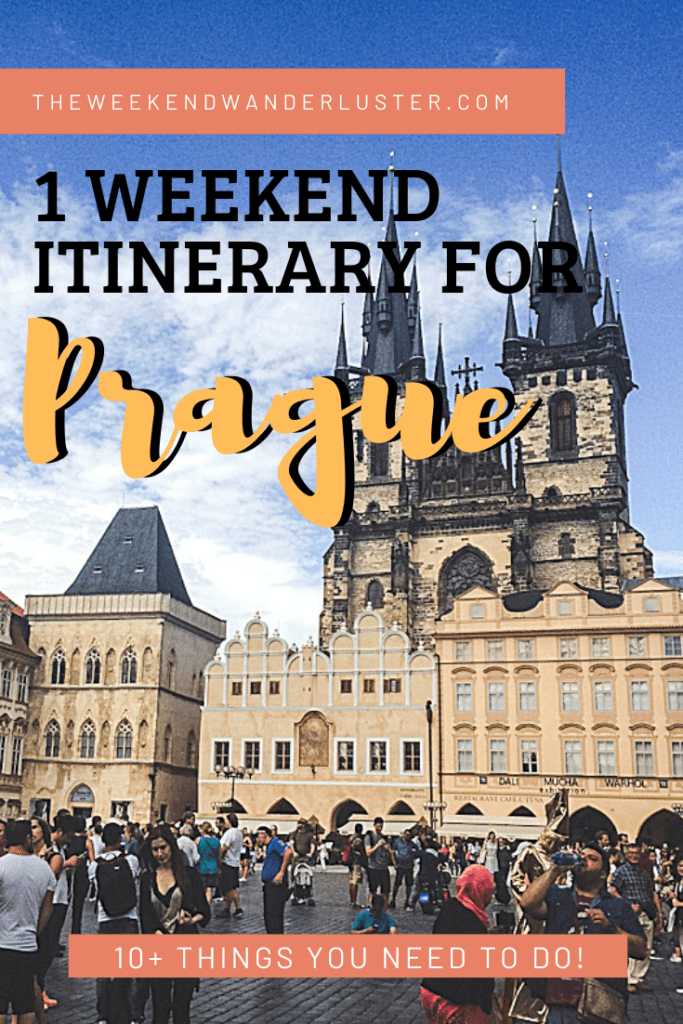How to Spend the Ultimate Weekend in Prague, Czech Republic

Prague has boomed in popularity in the last five years and there’s a reason why! Spending 48 hours in Prague, Czech Republic, will give you the perfect amount of time to explore Prague’s history, beauty, and delicious food and beer.
Prague’s maze of cobbled lanes and hidden courtyards is a paradise for people that love to wander and explore the city without a structured plan. Central Prague is very walkable. If you’re tired, the transit system is integrated so that tickets are valid on all types of transport. Trams are best for shorter distances and the metro is best for longer distances.
I was lucky to visit Prague a few years ago in the summer while on exchange in Vienna! I have nothing but amazing memories from that weekend with five of my friends from the program. My lovely friend, Nicole, was our local tour guide and helped show us all that Prague has to offer!
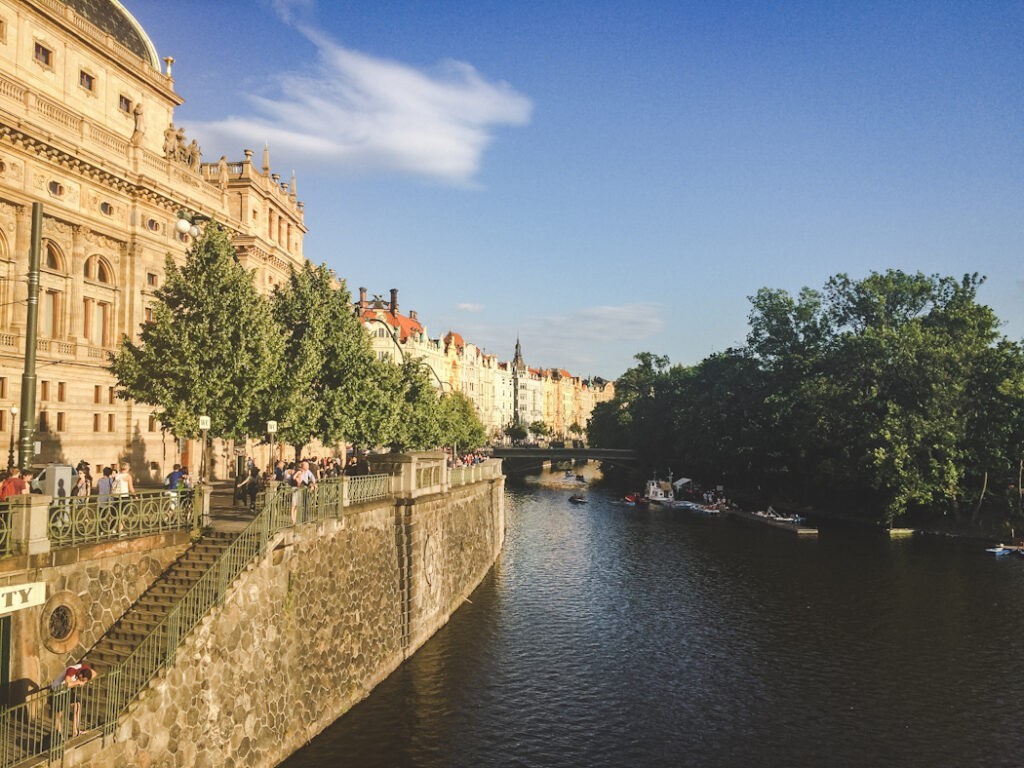
On sunny afternoons you’ll find many Czechs relaxing along the riverbank area called Náplavka. Day and night, it’s always lined with boats that double as cafes and bars! Visiting at sunset is the best time to take in the scenery and visit with friends. Let your feet hang above the water as you watch birds float by on the river underneath you. Prague is a truly unique city, unlike any other. Follow along with this list below as a guide to spending the perfect 48 hours in Prague, Czech Republic!
What to Eat in Prague, Czech Republic
Prague is very easy to get to from cities like Budapest, Vienna, Bratislava, and Munich! This makes it a perfect weekend trip. Staying in the old town near the train station would be ideal to maximize your time here and try all of the delicious food unique to Prague!

Since the invention of Pilsner Urquell in 1842, the Czechs have been famous for producing some of the world’s finest beer. Indulge in a Pils with some Czech cuisine, such as svíčková (sirloin beef and bread dumplings topped with a creamy sauce).

For dessert, find a food stand in town that sells Trdelník. It is known as a “Cronut” in other places that try to imitate it. They’re made from rolled dough that is wrapped around a stick, then cooked and topped with sugar and cinnamon. You can get them as is or with ice cream and chocolate inside. It’s a perfect treat to finish off your day!
Things to Do in Prague, Czech Republic
A quick note that the currency in the Czech Republic is the Czech crown (Kč). Bills come in denominations of 100Kč, 200Kč, 500Kč, 1000Kč, 2000Kč, and 5000Kč. Coins are 1Kč, 2Kč, 5Kč, 10Kč, 20Kč and 50Kč.
1. St. Vitus Cathedral
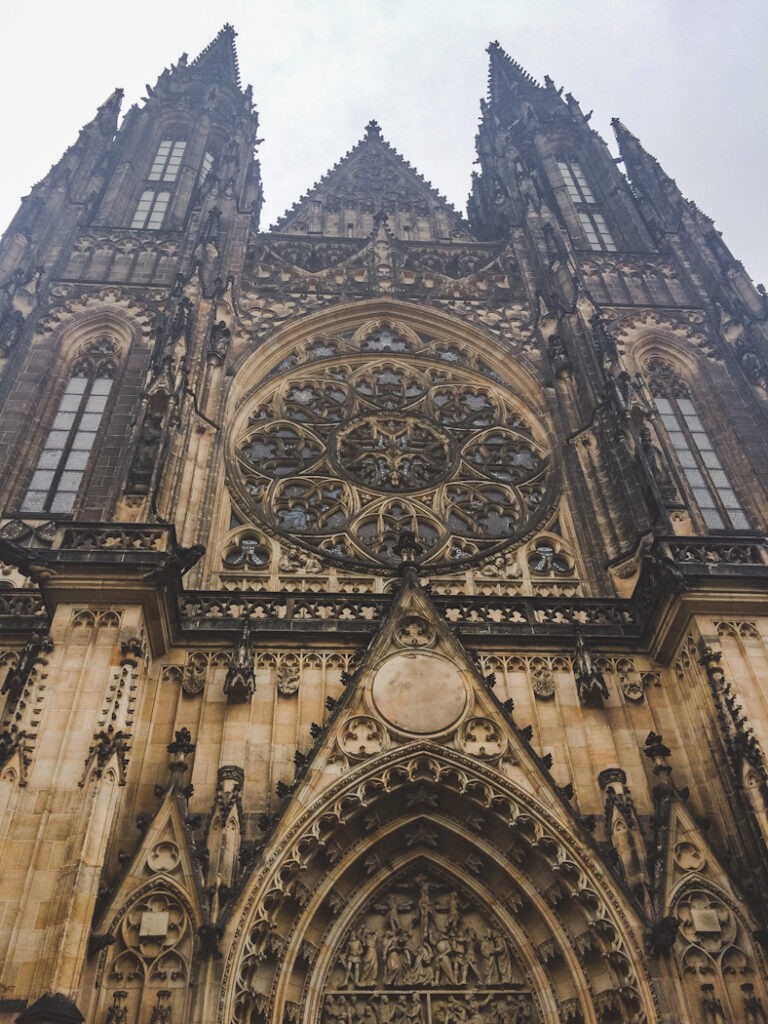
Built over a time span of almost 600 years, St. Vitus Cathedral is the most religious and culturally prevalent cathedral in Czech history. It houses treasures from the 14th century and the tombs of St. Wenceslas, St. Vitus, and Charles IV. The foundation stone was originally laid in 1344 by Emperor Charles IV.
Charles’ original architect began work in 1344 but died eight years later. His German successor completed most of the eastern side of the cathedral before he then died in 1399. Renaissance and baroque details were added over the following centuries, but only in 1861 during the Czech National Revival, was an effort made to finally finish the cathedral. It was consecrated in 1929.
2. Charles Bridge

Strolling across Charles Bridge is everybody’s favourite Prague spot (and therefore the busiest). It can be hard to find a non-crowded spot on the bridge, but it really is very atmospheric wandering through the local artists and buskers who set up on the side and looking up at the Prague Castle on the hill. The bridge connects the Old Town and the Lesser Quarter. Climbing the bridge tower on the Old Town side provides a stunning vista of Prague.

In 1357, Charles IV commissioned the architect of St. Vitus Cathedral to replace the 12th-century Judith Bridge (which had been washed away by floods). Charles Bridge was completed in 1390 and was originally known as Kamenný most (Stone Bridge). Despite occasional flood damage, it has withstood 500 years of wheeled traffic, invasions, and war.
3. Prague Castle
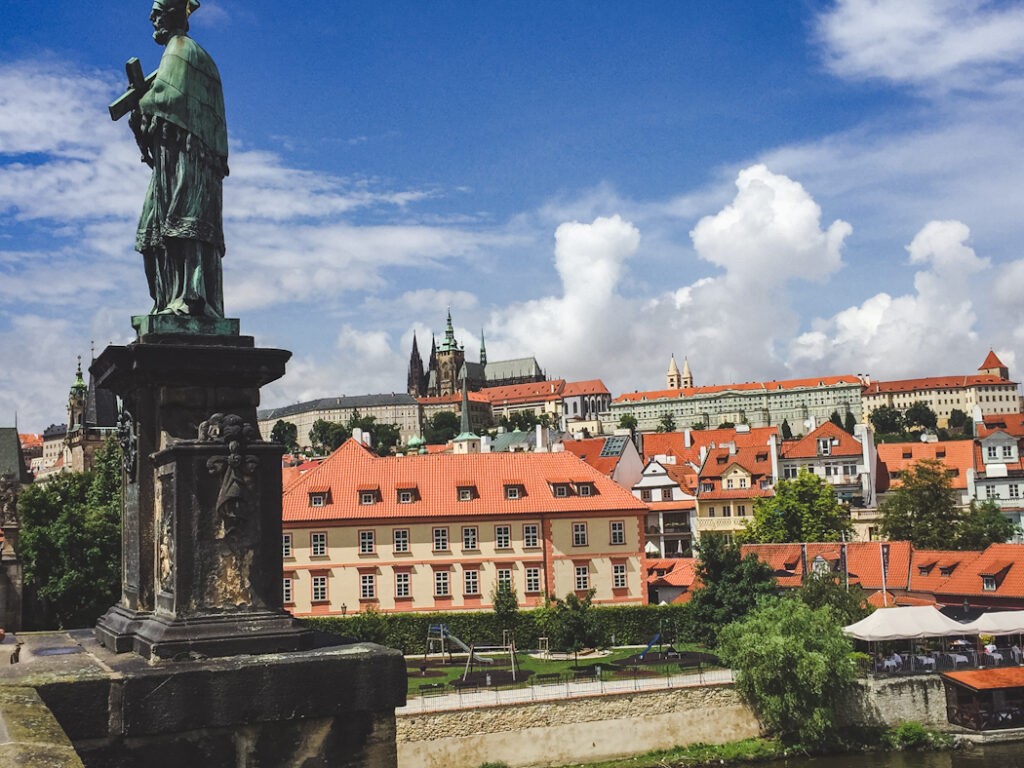
Prague Castle sits on the Vltava’s left bank and is Prague’s most popular attraction. Its towers look over the city like a fairy-tale fortress. According to the Guinness World Records, it’s the world’s largest ancient castle complex. It began in the 9th century and grew haphazardly as rulers made their own additions over the years. The castle has always been the seat of Czech monarchs and the official residence of the head of state.
Inside you can find a collection of historic buildings, museums, and galleries that are home to some of the Czech Republic’s greatest artistic treasures. Heading down from the castle you can follow the charming Golden Lane, which features several small, colourful houses originally constructed to house the castle guards and later accommodated local goldsmiths.

If you’d like to visit any of the exhibits inside the castle, there are three main kinds of tickets that are valid for two days and allow entry to different combinations of sights.
4. Prague Jewish Museum
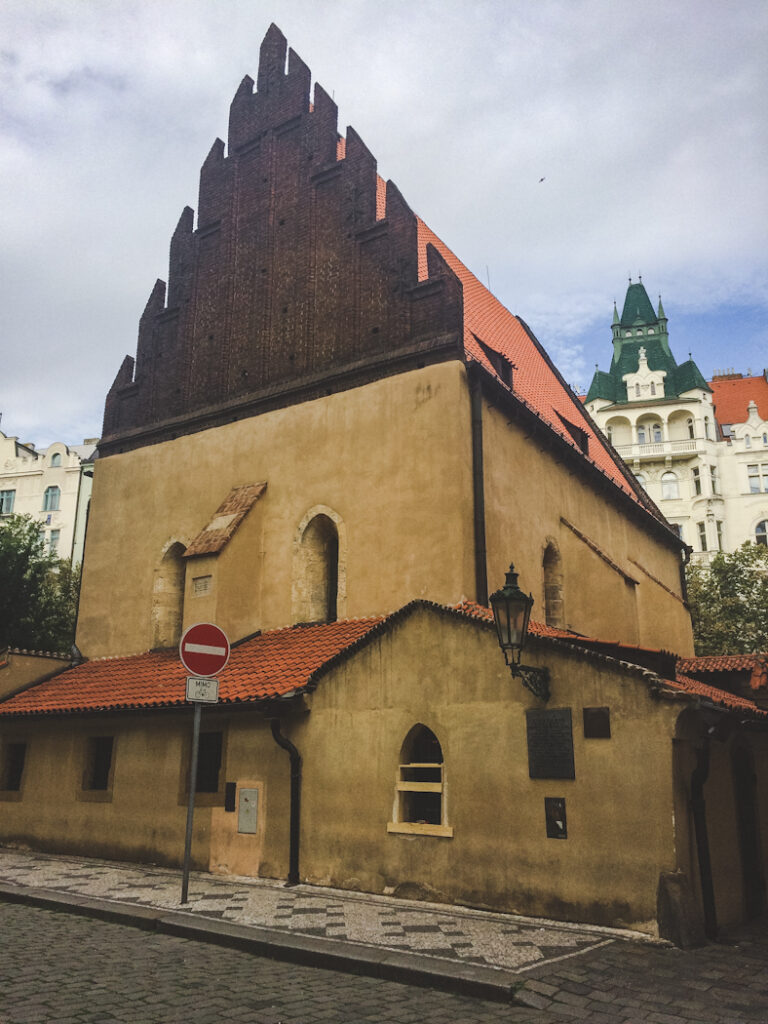
The Prague Jewish Museum consists of six Jewish monuments clustered together in Josefov: the Maisel Synagogue; the Pinkas Synagogue; the Spanish Synagogue; the Klaus Synagogue; the Ceremonial Hall; and the Old Jewish Cemetery. There’s also the Old-New Synagogue, which requires a separate ticket. If you’re short on time, the highlights are the Old-New Synagogue and the Old Jewish Cemetery.
In WWII, the Nazis took over the management of the Prague Jewish Museum with the intention of creating a “museum of an extinct race”. They shipped in materials and objects from destroyed Jewish communities throughout Bohemia and Moravia, creating the world’s biggest collection of sacred Jewish artifacts.
The Old-New Synagogue (pictured above) was completed in 1270. It’s Europe’s oldest working synagogue and one of Prague’s earliest Gothic buildings. You step down into it because it predates the raising of Staré Město’s street level in medieval times to guard against floods.
The Pinkas Synagogue was built in 1535 converted into a memorial after WWII, with its walls inscribed with the names of the 77,297 Czech victims of the Nazis. It also has a collection of drawings by children held in the Terezín concentration camp. The Pinkas Synagogue contains the entrance to the Old Jewish Cemetery, Europe’s oldest surviving Jewish graveyard. It was founded in the early 15th century and was closed in 1787. Around 12,000 crumbling stones are heaped together with 100,000+ graves beneath them.
5. Old Town Hall & Astronomical Clock
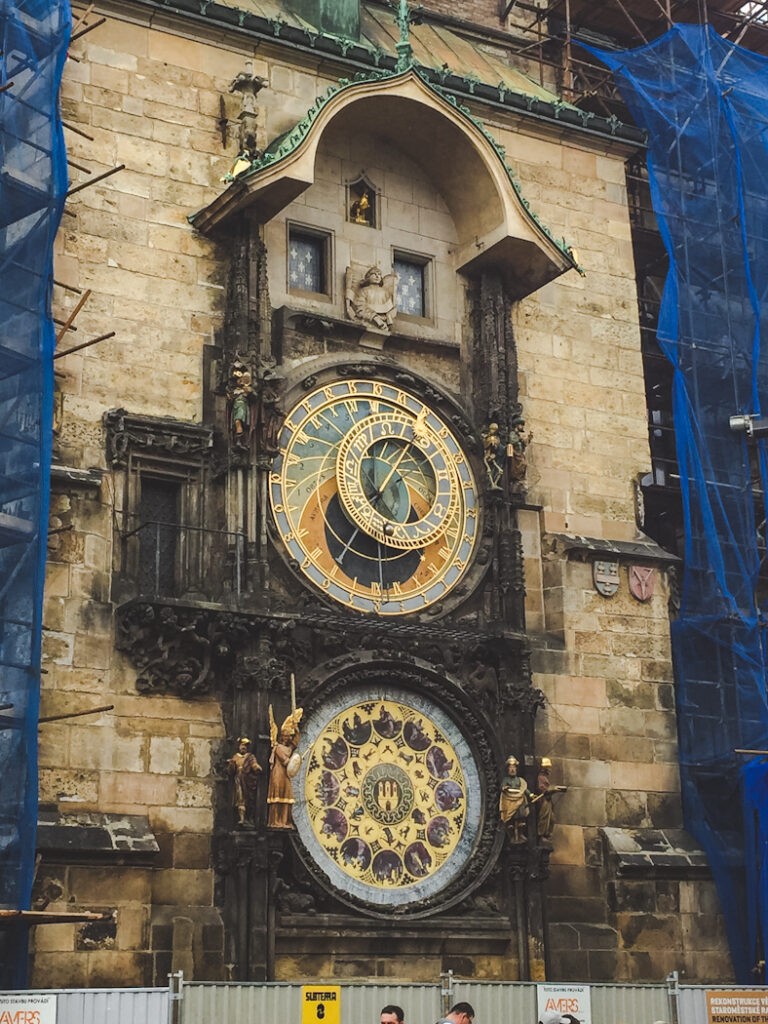
Prague’s Old Town Hall was founded in 1338 and is a patchwork of medieval buildings acquired over the centuries. It’s presided over by the Astronomical Clock. It now houses the Old Town’s main tourist information office and hosts art exhibitions. Visitors can take a guided tour and explore the Gothic chapel, look at the inner workings of the Astronomical Clock, and take a trip through the cellars beneath the building. The area outside the town hall is one of the most crowded corners of the Old Town Square.
Prague’s Astronomical Clock is a historic, symbolic masterpiece built in medieval times. It’s the world’s oldest functioning clock and every hour the 12 mechanical apostles parade between small doorways above the face of the clock. Crowds of tourists constantly gather to watch this 45 second performance unfold. The clock is one of Europe’s best-known tourist attractions, and a must-see for visitors to Prague!
Four figures beside the clock represent the civic anxieties of the 15th century: Vanity, Greed, Death, and Pagan Invasion. The four figures below are the Chronicler, Angel, Astronomer, and Philosopher. On the hour, Death rings a bell and inverts his hourglass, and the 12 Apostles parade past the windows above the clock. These are: Paul (with a sword and a book), Thomas (lance), Jude (book), Simon (saw), Bartholomew (book), Barnabas (parchment), Peter (with a key), Matthew (axe), John (snake), Andrew (cross), Philip (cross), and James (mallet).
6. Old Town Square (Staroměstské náměstí)
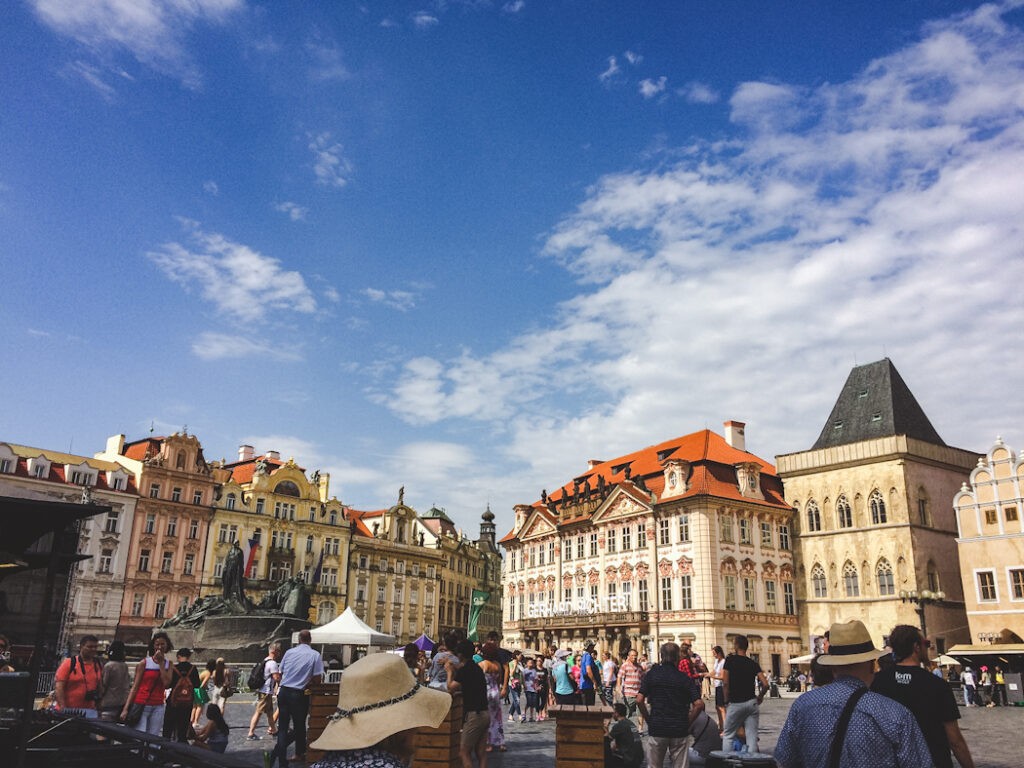
One of Europe’s most beautiful and busiest spots is the Old Town Square (Staroměstské náměstí) that has been Prague’s main public square since the 10th century. It was a marketplace until the beginning of the 20th century and today it’s where all tourists gather to view iconic Prague spots, listen to music, or enjoy the famous Christmas Markets.
7. Wenceslas Square
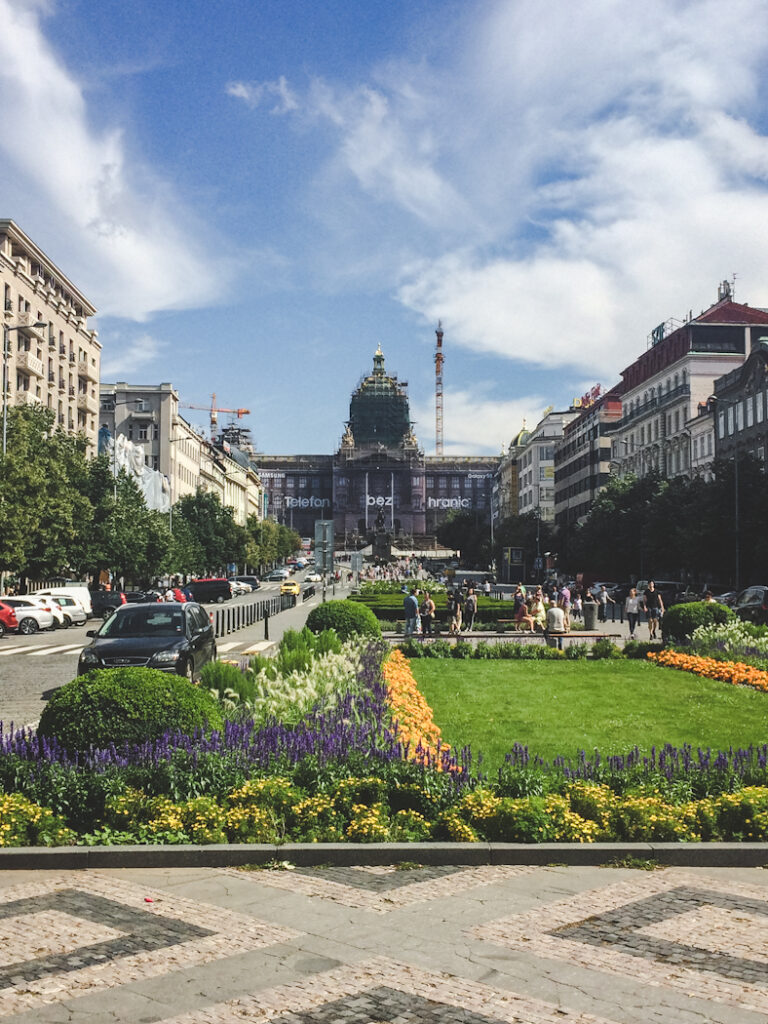
Wenceslas Square (Prague’s biggest square) is watched over by the iconic monument to Saint Wenceslas. It’s been a gathering place during many of the great events of modern Czech history, including the declaration of the new Republic of Czechoslovakia in 1918, the Warsaw Pact invasion of 1968, and the Velvet Revolution of 1989. Today it’s the commercial heart of the city that you see as you arrive in Prague by train or bus, with big-name stores, art-nouveau architecture, and lovely gardens.
8. Church of Our Lady Before Týn
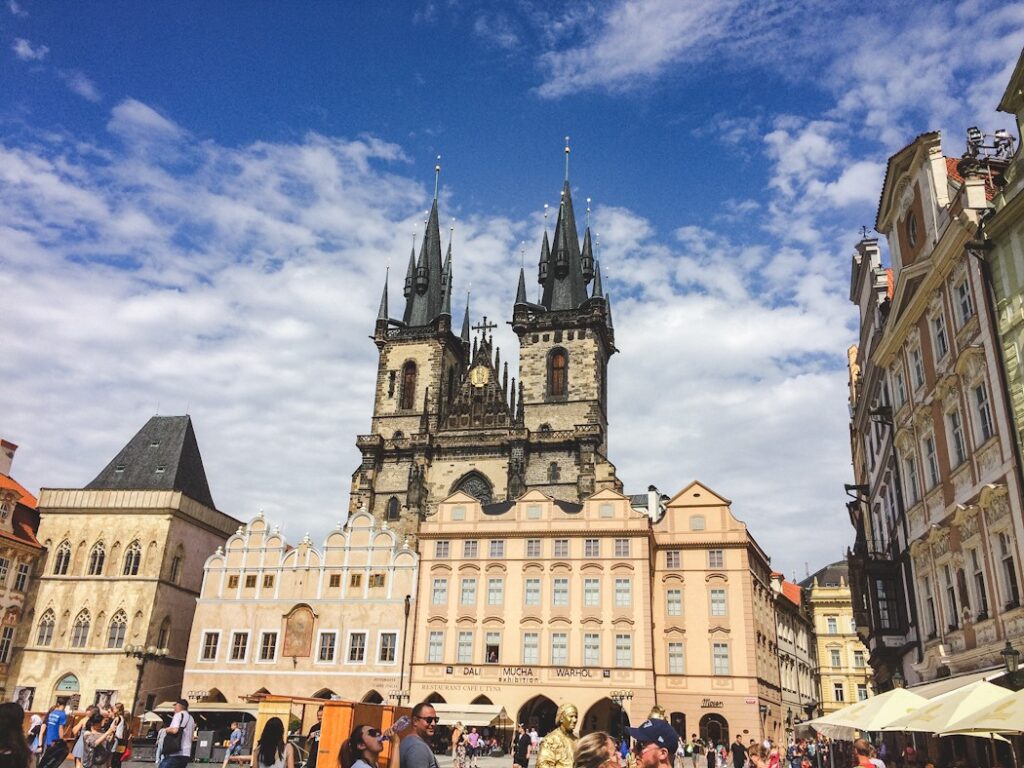
Its distinctive twin Gothic spires make the Church of Our Lady Before Týn an unmistakable Old Town landmark. It looks like something out of a 15th-century fairy tale as it looms over the Old Town Square. The church’s name originates from the Týn Courtyard located behind it.
Though impressively Gothic on the outside, the church’s interior is actually heavy baroque. Inside the southern wall of the church are two small windows that once opened from rooms in the neighbouring house at Celetná 3, where the teenage Franz Kafka lived.
9. John Lennon Wall
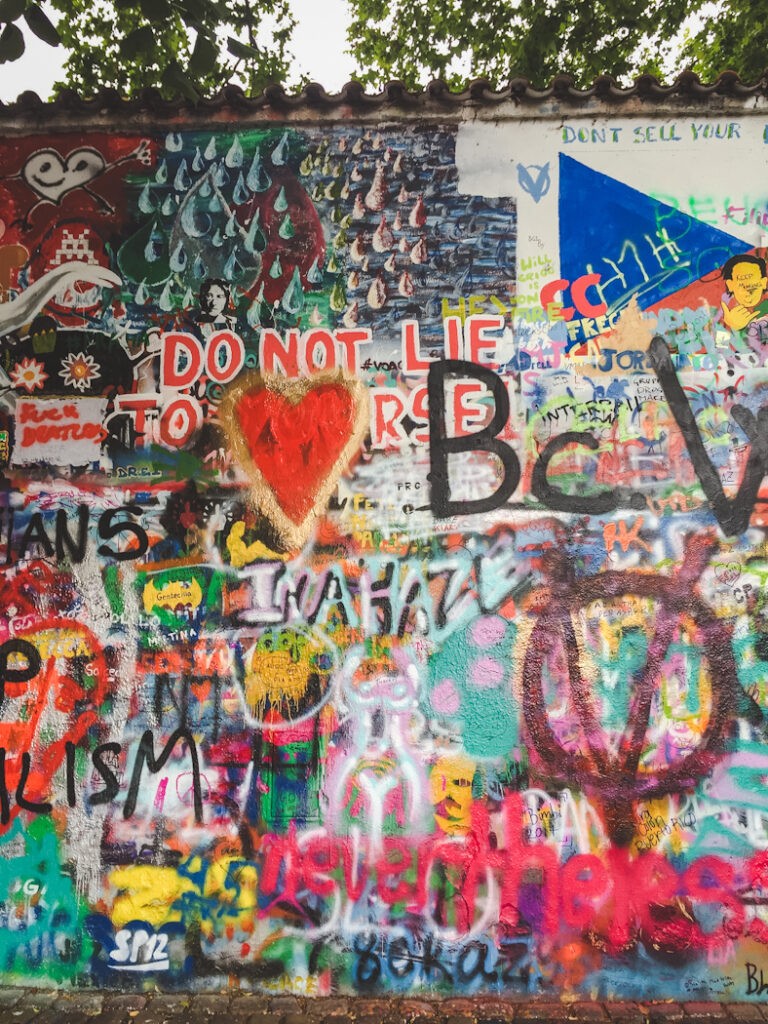
After his murder in 1980, John Lennon became a pacifist hero for many young Czechs who painted images of Lennon, political graffiti, and Beatles lyrics on the newly named John Lennon Wall. Despite repeated coats of whitewash, the police never managed to keep it clean for long, and the Lennon Wall became a political focus for Prague youth. Visiting tourists began making their own contributions and today remains a symbol for Prague and one of the top-visited attractions!
10. Dancing House
The Dancing House stands out against the architecture of the traditional Prague buildings. It was built in 1996 by architects Vlado Milunić and Frank Gehry. The curved lines of the narrow-waisted glass tower clutched against its more upright and formal dancing partner led to its name. Today it houses offices, an art gallery, a restaurant, and a luxury hotel!
Other Things to See in Prague, Czech Republic

1. Prague Zoo
The Prague Zoo is set in 60 hectares of wooded grounds on the banks of the Vltava. It makes for a great outing for kids. There are over 600 species at Prague Zoo including giraffes, gorillas, and rare horses. It opened in 1931 and has risen to become one of the most prestigious zoos in the world. Today, it’s the second most visited tourist destination in the Czech Republic, after Prague Castle.
2. Municipal House
Prague’s main art-nouveau building is a popular spot to tour. You can look around the lobby and the downstairs bar for free, or book a guided tour in the information centre. The Municipal House stands on the site of the Royal Court (seat of Bohemian kings from 1383 to 1483) which was demolished at the end of the 19th century. The Municipal House was built in its place in the early 1900’s and created a cultural centre of the Czech National Revival.
3. National Monument of Prague, Czech Republic
While the Czech National Monument’s massive functionalist architecture has a feel of the communist era, it was actually completed in the 1930s. The interior is polished art-deco marble and is home to a museum of 20th-century Czechoslovak history. There are exhibits recording the founding of the Czechoslovak Republic in 1918, WWII, the 1948 coup, the Soviet invasion of 1968, and the Velvet Revolution of 1989.
4. National Memorial to the Heroes of the Heydrich Terror
The National Memorial to the Heroes of the Heydrich Terror is dedicated to the seven Czech paratroopers who were involved in the assassination of Reichsprotektor Reinhard Heydrich in 1942. It features an exhibit about Nazi persecution of the Czechs. The paratroopers hid in the church’s crypt for three weeks after the killing, until their hiding place was betrayed. The Germans besieged the church, flooding the crypt with fire hoses. Three paratroopers were killed and the other four took their own lives rather than surrender. Today you can still see the bullet marks on the walls.
Final Thoughts on Prague, Czech Republic

Prague, Czech Republic is one of the most popular cities in central Europe. It has such a diverse history. The 1989 Velvet Revolution that freed the Czechs from communism brought out a gem of a city that brings in visitors from around the world. Even the crowds during peak summer days can’t take away from the spectacle of a Charles Bridge, Prague Castle on the hill, and the lovely Vltava River.

Although I have visited Prague in the summer, I can’t wait to go back one day and experience the Christmas Markets and the charm of the city in the snow. There is no bad way to spend 48 hours in Prague, Czech Republic, as no matter where you go in the city you will find something to explore!
If you’ve been to Prague, what surprised you most about the city? And if not, what’re you most interested in seeing?
Kelly xo


